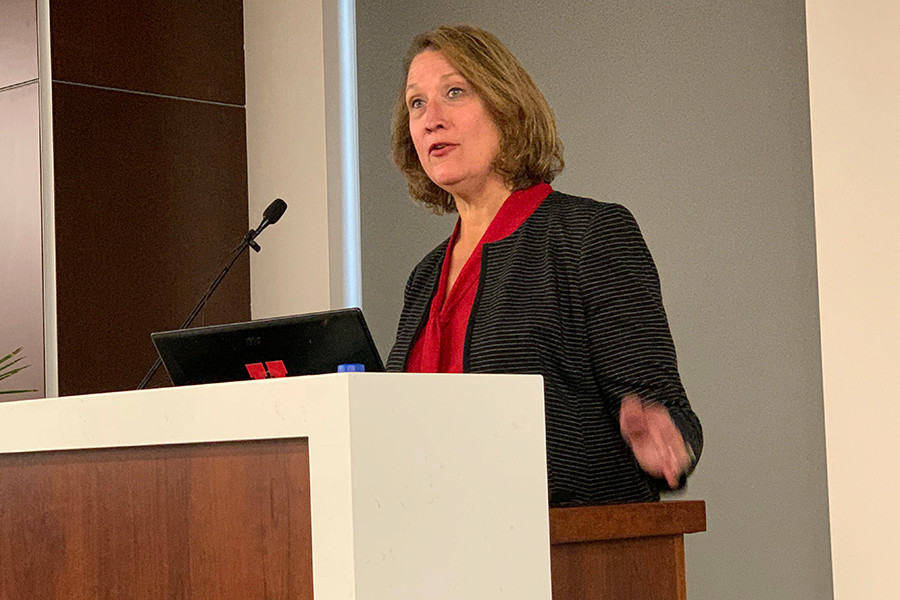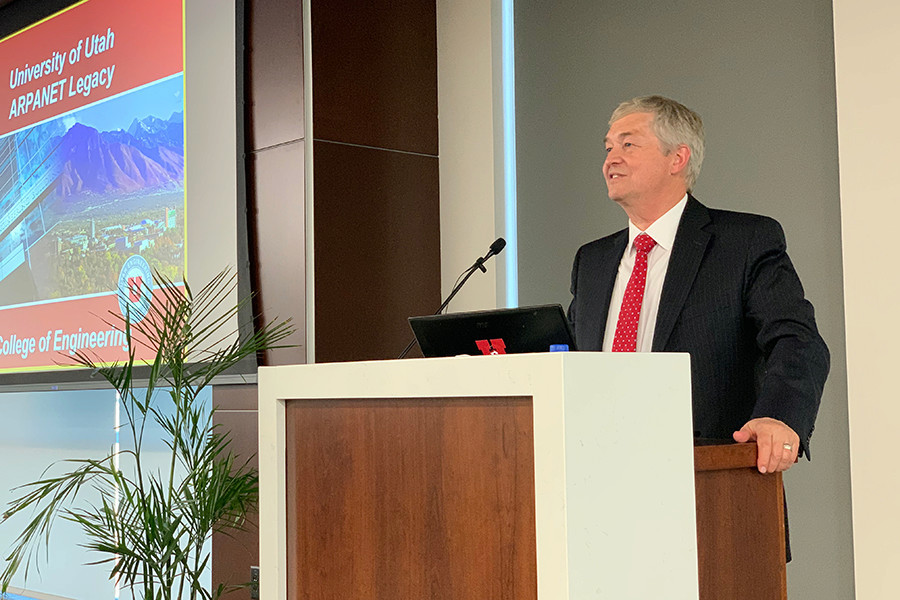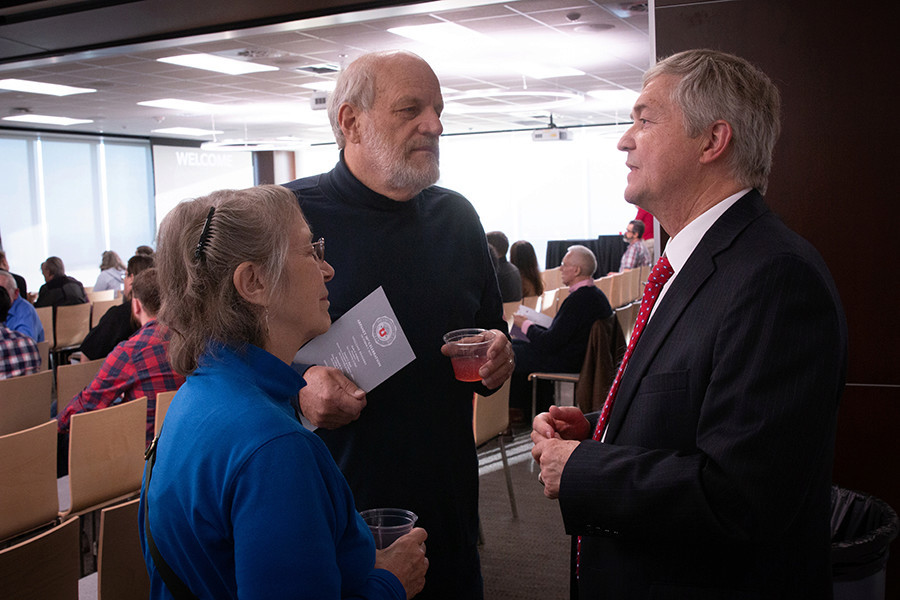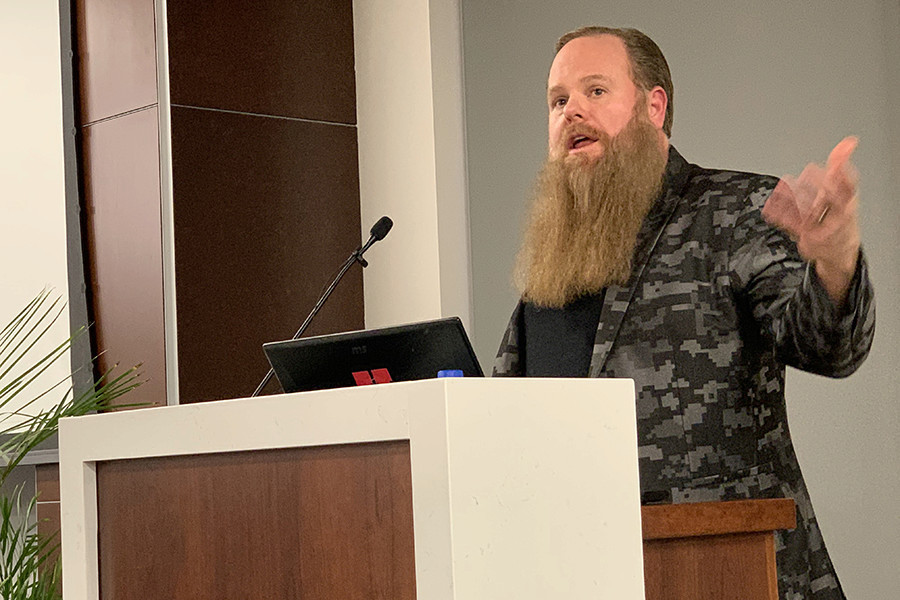As University of Utah School of Computing Chair Ross Whitaker noted, this year marks the 50th anniversary of two important milestones: the debut of the cult British TV series, “Monty Python’s Flying Circus,” and the birth of the internet.
Only one of those began at the U.
To celebrate the U’s involvement in the ARPANET project in 1969, the world’s first computer network that was a precursor to the internet, the School of Computing held an anniversary event Oct. 7 at the Robert H. and Katharine B. Garff Building on the university campus. Guest speakers included Damien Patton, CEO of Park City-based Banjo; Utah Lt. Gov. Spencer Cox; and School of Computing associate professor Kobus Van der Merwe, who leads the POWDER project to create a test bed in Salt Lake City for wireless communications companies. Welcoming remarks were given by College of Engineering Dean Richard B. Brown, University of Utah President Ruth Watkins and Senior Vice President of Academic Affairs Daniel A. Reed.
In December 1969, the U’s then new computer science department became involved with the U.S. government’s project to develop the first long-distance computer network. The U was one of four “nodes” that would launch the network that included UCLA, the Stanford Research Institute and the University of California at Santa Barbara.
Since then, the U’s computer science department, now called the School of Computing, has been the home of pioneering work in digital technology and computer graphics. It spawned such legendary innovators in the field as Adobe co-founder John Warnock, Pixar co-founder and president Ed Catmull, computer interface visionary Alan Kay, Netscape founder Jim Clark and digital sound pioneer Thomas Stockham.
Today, the department continues to spearhead research in computing, including the POWDER test bed. POWDER was deployed along a corridor of downtown Salt Lake City and the U campus so telecommunications companies such as AT&T and Comcast can test new wireless technologies. It is only one of two such test beds in the U.S.
Such innovations in Utah have led to the state becoming one of the newest hot spots for technology development and business growth. Brown said the Wasatch Front has become the fastest-growing tech sector in the U.S., and as a result, new businesses here are looking for qualified engineering graduates.
“Utah has a bright future in technology,” he said.
Click below or a gallery of photos of the night’s event.










